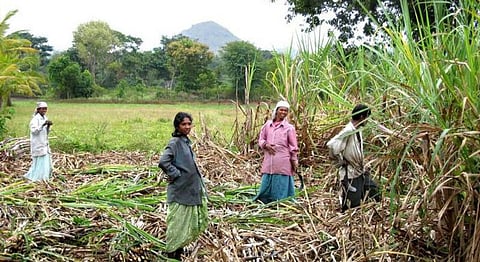
- HOMEGROWN WORLD
- #HGCREATORS
- #HGEXPLORE
- #HGVOICES
- #HGSHOP
- CAREERS
- ABOUT US
- CONTACT US

Vijay Limaye, an insurance surveyor and loss assessor in the central Indian city of Nagpur, was worried about the fact that practitioners of the Hindu culture end up felling thousands of trees every year for cremations. So, he started researching the other possible alternatives to wood, which people could use to cremate their dear ones. While travelling in various states for work-related purposes, he started visiting crematoriums to see if there were any alternatives to wood. He found that in some parts of western and central India, the body is burnt on a pyre made of cow dung cakes. Even though he was able to persuade people to opt for cow dung cakes, he soon hit an obstacle when the suppliers started demanding exorbitant prices for each dung cake. It was then that he realised that he needed something which was both sustainable and affordable. Once when he was passing by an agricultural field on fire, it occurred to him that the crop residue, which is anyway burnt by the farmers, could be used in making funeral pyres to cremate dead bodies. Thus, he came up with a model briquette that could replace wood for cremation.
“Each morning, I would spend at least 3-4 hours at the cremation ground. Once a week, I could convince a family to use briquettes. I would diligently note down the time and quantity of briquettes required to burn the body completely,” Limaye tells VICE.
A factory on the outskirts of Nagpur was already manufacturing briquettes using sawdust, furniture shop waste and crop residue of different crops. However, after some trial and error, a briquette made of either soybean, Arhar dal (split pigeon peas) or cotton crop residue was found to be the right combination.
Limaye got the desired result after 13014 cremations and named it ‘Mokshakashtha’ (translated into ‘wood for salvation’).
In November 2015, Limaye took the idea of briquettes replacing dung cakes to then-Nagpur Mayor Praveen Datke, who had already given a green signal to the use of dung cakes in cremations.
Limaye ran another pilot project for three years at the same crematorium for which the NMC (Nagpur Municipal Corporation) offered a 100 per cent subsidy on cremations using briquettes. During the last three years, as many as 18,000 bodies were cremated using Mokshakashtha. It has been a development in the right direction since it has saved thousands of trees from being felled as well as curbing the air pollution routinely caused by stubble burning in the NCR region every winter.
If you enjoyed reading this article, we suggest you also read:
